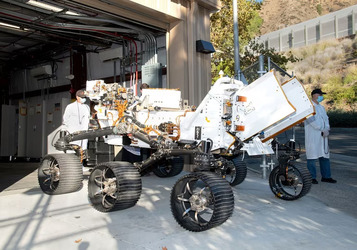The week's pick
Random Articles
Reseach Article
Machine Learning Models, Data Preprocessing Techniques and Suite of Metrics for Assessing Solar Power Forecasting: A Comprehensive Review
| Communications on Applied Electronics |
| Foundation of Computer Science (FCS), NY, USA |
| Volume 8 - Number 1 |
| Year of Publication: 2025 |
| Authors: Asma, A.M. Nagaraja |
 10.5120/cae2025652911
10.5120/cae2025652911
|
Asma, A.M. Nagaraja . Machine Learning Models, Data Preprocessing Techniques and Suite of Metrics for Assessing Solar Power Forecasting: A Comprehensive Review. Communications on Applied Electronics. 8, 1 ( Aug 2025), 8-20. DOI=10.5120/cae2025652911
Abstract
As we know, the energy obtained from sun is intermittent in nature hence its generation is affected by rapidly changing weather conditions. Hence to balance the supply demand and to improve the accuracy and efficiency of the system, forecasting the solar energy highly necessitates. In view of this, different photovoltaic power forecasting techniques using machine learning models, different data pre-processing techniques and the evaluation metrices are discussed. Further to improve the system performance and efficiency quality data input which is pre-processed is highly required. This paper discusses the comprehensive review of different solar forecasting techniques along with traditional forecasting techniques and a comparison review of ML models, respective algorithms used and various techniques for preprocessing the data are presented. Further, different suite metrices for assessing the performance of solar power forecasting is also presented.
References
- Essam Y, Ahmed A. N., Ramli R., Chau, K. W, Idris Ibrahim, M. S., Sherif, M. El-Shafie A. “Investigating photovoltaic solar power output forecasting using machine learning algorithms. Engineering Applications of Computational Fluid Mechanics”, 16(1), 2002-2034. https://doi.org/10.1080/19942060.2022.2126528.
- P.Ramsami, V. Oree, “ A hybrid method for forecasting the energy outpiut of photovoltaic systems”, Energy Converse. Manag., Vol. 95, pp. 406-413, May 2015, doi:10.1016/j.enconman.2015.02.052
- Lin, K.-p.,-F., “Solar power output forecasting using evolutionary seasonal decomposition least square support vector regression , Journal of cleaner Production (2015), http://dx.doi.org/10.1016/j.jclepro.2015.08.099
- Huang, Jing & Perry, Matthew, 2016, “A Semi-emperical approach using gradient boosting and k-nearest neighbors regreszsion for GEFCom 2014 probablistics solar power forecasting, “ International Journal of Forecasting, Elsevier, Vol. 32(3), pages 1081-1086. doi: 10.1016/j.ijforecast.2015.11.002
- H. Long, Z. Zhang, and Y. Su, “Analysis of daily solar power prediction with data-driven approaches, “Appl. Energy, Vol. 126, pp. 29-37, Aug. 2014, doi: 10.1016/j.apenergy.2014.03.084
- A Nespoli, S. Leva, M. Musetta and E. G. C Ogliari, “ A selective ensemble approach for accuracy improvement and computational load reduction in ANN-based PV power forecasting”, IEEE Access, Vol. 10, pp. 32900-32911, 2022, doi: 10.1109/ACCESS.2022.3158364
- Lopez Gomez, J.Ogando Martinez, A. Troncosco Pastoriza, F. Febrero Garrido, L. Granada Alvarez, E. Orosa Garcia, J. A, “ Photovoltaic Power prediction using Artificial Neural Networks and Numerical weather data”, Sustainibility 2020, 12,10295. https://doi.org/10.3390/su122410295.
- Keddouda A, Ihaddadene r, Boukhari A, Arici M, Lebbihiat N, et al., “ Solar Photovoltaic Power prediction using Artificial Neural Network and Multiple regression considering ambient and operating conditions”, Energy Converge Management, 2023, https://doi.org/10.1016/j.enconman.2023.117186. https://www.researchgate.net/publication/371094033
- M. Abuella and B. Chowdhury, "Solar power probabilistic forecasting by using multiple linear regression analysis," SoutheastCon 2015, Fort Lauderdale, FL, USA, 2015, pp. 1-5, doi: 10.1109/SECON.2015.7132869.
- Gavrishchaka, Valeriy & Ganguli, Supriya. (2001). Support vector machine as an efficient tool for high-dimensional data processing: Application to substorm forecasting. Journal of Geophysical Research. 106. 29911-29914. 10.1029/2001JA900118
- Neha Singh, Satyaranjan Jena, Chinmoy Kumar Panigrahi, “A novel application of Decision Tree classifier in solar irradiance prediction”, Materials Today: Proceedings, Volume 58, Part 1, 2022, Pages 316-323, ISSN 2214-7853, https://doi.org/10.1016/j.matpr.2022.02.198. (https://www.sciencedirect.com/science/article/pii/S2214785322008124).
- Rathika Senthil Kumar, P.S. Meera, V. Lavanya, S. Hemamalini, “Brown bear optimized random forest model for short term solar power forecasting”,Results in Engineering, Volume 25, 2025, 104583, ISSN 2590-1230, https://doi.org/10.1016/j.rineng.2025.104583. (https://www.sciencedirect.com/science/article/pii/S2590123025006619)
- Zhe Song, Fu Xiao, Zhe Chen, Henrik Madsen, “Probabilistic ultra-short-term solar photovoltaic power forecasting using natural gradient boosting with attention-enhanced neural networks”, Energy and AI, Volume 20, 2025, 100496, ISSN 2666-5468,https://doi.org/10.1016/j.egyai.2025.100496. (https://www.sciencedirect.com/science/article/pii/S266654682500028X)
- Nor Azuana Ramli, Mohd Fairuz Abdul Hamid, Nurul Hanis Azhan, Muhammad Alif As-Siddiq Ishak, “ Solar power generation prediction by using k-nearest neighbor method”, AIP Conf. Proc. 2129, 020116 (2019) https://doi.org/10.1063/1.5118124
- R. Asghar, F. R. Fulginei, M. Quercio and A. Mahrouch, "Artificial Neural Networks for Photovoltaic Power Forecasting: A Review of Five Promising Models," in IEEE Access, vol. 12, pp. 90461-90485, 2024, doi: 10.1109/ACCESS.2024.3420693.
- Nattha Thipwangmek , Nopparuj Suetrong, Attaphongse Taparugssanagorn , Suparit Tangparitkul , And Natthanan Promsuk, “ Enhancing Short-Term Solar Photovoltaic Power Forecasting Using a Hybrid Deep Learning Approach”, 16 August 2024. Digital Object Identifier 10.1109/ACCESS.2024.3440035
- Meftah Elsaraiti and Adel Merabet , “Solar Power Forecasting Using Deep Learning Techniques”, March 17, 2022, date of current version March 25, 2022. Digital Object Identifier 10.1109/ACCESS.2022.3160484.
- W. Li and K. L. E. Law, "Deep Learning Models for Time Series Forecasting: A Review," in IEEE Access, vol. 12, pp. 92306-92327, 2024, doi: 10.1109/ACCESS.2024.3422528.
- Kate Doubleday, Stephen Jascourt, William Kleiber, Bri-Mathias Hodge, “ Probabilistic Solar Power Forecasting Using Bayesian Model Averaging”, IEEE Transactions on Sustainable Energy, Jan 2021, https://doi.org/10.1109/tste.2020.2993524
- N. Omri, J. Jamii, M. Mansouri and M. F. Mimouni, "Solar Irradiance Forecasting using Gaussian Process Regression Model," 2023 20th International Multi-Conference on Systems, Signals & Devices (SSD), Mahdia, Tunisia, 2023, pp. 99-103, doi: 10.1109/SSD58187.2023.10411196.
- Hussain, S., and AlAlili, A. (October 18, 2016). "Online Sequential Learning of Neural Networks in Solar Radiation Modeling Using Hybrid Bayesian Hierarchical Approach." ASME. J. Sol. Energy Eng. December 2016; 138(6): 061012. https://doi.org/10.1115/1.4034907
- AlKandari, M. and Ahmad, I., 2024. Solar power generation forecasting using ensemble approach based on deep learning and statistical methods. Applied Computing and Informatics, 20(3/4), pp.231-250.
- M. J. Zideh, P. Chatterjee and A. K. Srivastava, "Physics-Informed Machine Learning for Data Anomaly Detection, Classification, Localization, and Mitigation: A Review, Challenges, and Path Forward," in IEEE Access, vol. 12, pp. 4597-4617, 2024, doi: 10.1109/ACCESS.2023.3347989.
- Choudhury, Souma & messac, Achille & Castillo, Luciano. (2011), “ Multivariate and multimodal Wind Distribution model based on kernel density estimation”, Renewable energy. Doi.org/10.1115/ES2011-54507
- Zhang J , Choudhury, Messac, Achille & Castillo, L., 2013a., 2013a., “ A Multivariate and Multimodal Wind Distribution model”, Renewable Energy, Vol 51, 436-447. http://dx.doi.org/10.1016/j.renene.2012.09.026
- Zhang. J, Hodge, B.-M., Florita, A., 2013e, Joint probability distribution and correlation analysis of wind and solar power Forecast Errors in the Western Interconnection. Journal of Energy Engineering.http://dx.doi.org/10.1061/(ASCE)EY.1943-7897.0000189
- Juban, J., Siebert, N., Kariniotakis, G. N., 2007, “ Probabilistic short-term wind power forecasting for the optimal management of wind generation. IEEE Power Eng. Society, Lausanne Power Tech Conf. proc., 683-688. IEEE Transactions on industry Applications, Vol. 49. No. 6, Nov/Dec2013.http://dx.doi.org/10.1109/PCT.2007.4538398
- Jones, M. Marron, J Sheather. S, “A brief survey of bandwidth selection for density estimation”, American Statistical Association., 1996., vol 41, 401-407, http://www.jstor.org/stable/2291420
- Espinar B, Ramirez L, Drews A, Beyer H G, Zarzalejo L F, Polo J, martin L, Analysis of different comparisonparameters to solar radiation data from satellite and german radiometetric stations. Solar Energy, 2009, vol. 83, 2009, https://doi.org/10.1016/j.solener.2008.07.009
- Florita M, Hodge and K Orwig, “Identifying wind and Solar ramping Events”, IEEE green technologies Conference (Green Tech), 2013, 147-142, doi: 10.1109/GreenTech.2013.30
- Zhu H, Li X, Sun Q, Nie L, Yao J, Zhao G. a power prediction method for photovoltaic power plant based on wavelet Decomposition anrtificial neural networks, energies, 2015, vol 9 https://doi.org/10.3390/en9010011.
- Grimaccia F, Leva S, Mussetta M, Olgiari E, “ANN sizing procedure for the day- ahead output power forecast of a PV plant”, Appli science, Vol 7 (6):622, https://doi. org/10.3390/su151411144
- Bahera M K, Majumdar I , Nayak N,” Solar Photovoltaic Power forecasting using optimised modified extreme learning machine technique”, Engineering science and technology, An International Journal, Vol 21 Issue 3, 2018, 245 : 114569, https://doi.org/ 10.1016/j.jestch.2018.04.013
- Guermoui M, Bouchouicha K, bailek N, Boland J W, “ Forecating Intra hour varience of photovoltaic power using a new integrated model”, Energy Conversion Management, 2021, Vol 245:114569, https://doi.org/10.1016/j.enconman.2021.114569
- Jiang M, Ding K, Chen X, Cui L, Zhang J, Yang Z, et al, “Research on Time series based and similarity search based methods for PV power Prediction”, Energy Conversion Management, 2024, Vol, 308: 118391. https://doi.org/10.1016/j.enconman.2024.118391
- Lin h, Gao L, Cui M, Liu H, Li C, Yu M, “ Shprt term distributed photovoltaic power prediction based on temporal self attention mechanism and advanced signal decomposition techniques with feature fusion”, Energy, 2025, Vol 315:134395, https:// doi.org/10.1016/j.energy.2025.134395.
- M Gao, J li, F Hong and D Long, “ Day-ahead power forecasting in a large scale photovoltaic plant based on weather classification using LSTM”, Energy, Vol. 187, 2019, Art No. 115838, doi:10.1016/j.energy.2019.07.168.
- S Theocharides, G makrides, A Livera, M Theristis, P Kiamakis and G E Georghiou, “ Day-ahead photovoltaic power production forecasting methodology based onm machine learning and Statistical postprocessing”, Appli. Energy, Vol 268, Jun 2020, Art No. 115023, doi:10.1016/j.apenergy.2020.115023.
- S Pretto, E Ogliari, A Niccolai, A, Nespoli, “A New Probablistic Ensemble Methos for an enhanced day-ahead PV power forecast”, IEEE J.Photovolt, Vol 12, pp 581-588, Mar 2022, doi: 10.1109/JPHOTOV.2021.3138223
- A Abdellatif, h Mubarak, S Ahmed, T Ahmed, G M Shafiullah, A Hommaoudeh, H Abdellatif, M M Rehman and H M Gheni, “Forecasting Photovoltaic Power generation with a stacking Ensemble Model”, Sustainibility, Vol 14, no 17, p 11083, Sep 2022, doi: 10.3390/su141711083
- W Khan, S Walker, W Zeiler,” Improved Solar Photovoltaic Energy Generation Forecast using Deep Learning based Ensemble Stacking Approach”, Energy, Vol 240, Feb, 2022, Art No. 122812, doi: 10.1016/j.energy.2021.122812.
Index Terms
Keywords

